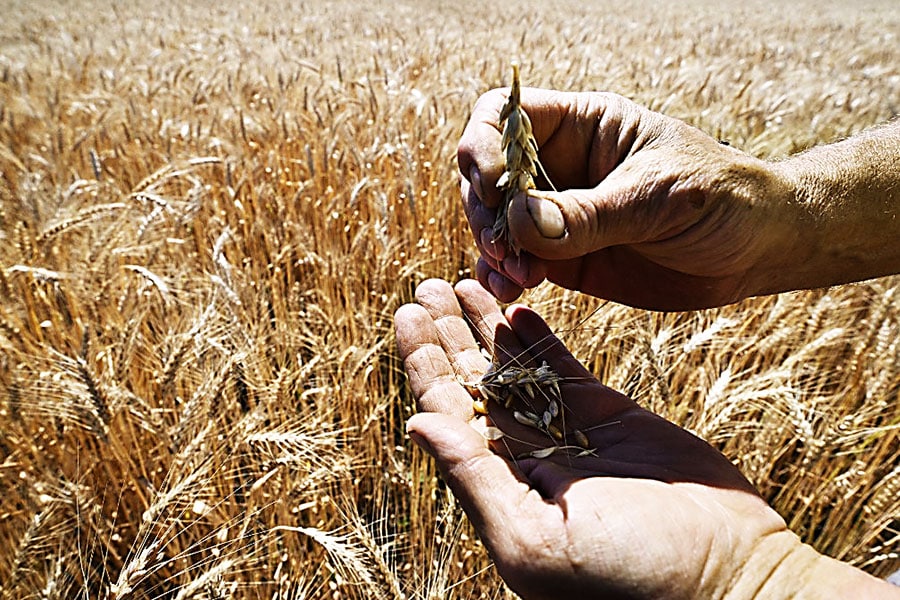
Wheat war: How Ukraine conflict raises hunger fears
Wheat prices were already high before the Russian invasion of Ukraine, and surged even higher after it, exceeding 400 euros ($418) per tonne in May on the European market, double its level last summer
 Farmer Serhii Liubarsky, 59, shows wheat grains at a wheat field next to Rai-Oleksandrivka village, on July 1, 2022, amid Russia's military invasion launched on Ukraine. Between a lack of fuel and the risk of being bombed, some Ukrainian farmers are wondering how they will harvest their fields as the period for certain crops approaches in July. Image: Genya Savilov / AFP
Farmer Serhii Liubarsky, 59, shows wheat grains at a wheat field next to Rai-Oleksandrivka village, on July 1, 2022, amid Russia's military invasion launched on Ukraine. Between a lack of fuel and the risk of being bombed, some Ukrainian farmers are wondering how they will harvest their fields as the period for certain crops approaches in July. Image: Genya Savilov / AFP
Paris, France: Russia's invasion of agricultural power Ukraine has severely disrupted the global wheat market, prompting warnings that the conflict could lead to hunger in some countries.
Why is wheat irreplaceable?
Wheat is milled into flour to make a huge range of foods, from bread to pasta to desserts.
"Everyone eats wheat, but not everyone is capable of producing it," says Bruno Parmentier, an economist and author of the book "Feeding Humanity".




